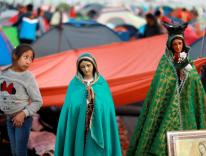While media attention has focused on marriage equality for same-sex couples, almost no attention has been paid to a historic transformation in marriage that has far-reaching consequences for economic equality in the society as a whole. Without much fanfare, the nature of marriage has undergone a profound change. It used to be a democratic institution, open to the many. It is evolving into an elite institution, open chiefly to the well-educated few. In short, marriage is becoming yet another form of privilege.
Rich or poor, most Americans prize marriage above all other intimate unions. Most want to marry and to stay married for a lifetime. But increasingly, those who seek a long-lasting marriage are divided in their ability to actually achieve this goal. The marriage “haves” are those with four-year college degrees. The marriage “have-nots” are those who lack this credential. The college-educated are the most likely to marry and to stay married. And happily so. Women with college degrees report higher levels of marital satisfaction than other married women. Those who do not have the college credential are more likely to forgo marriage altogether or to have marriages that end in divorce.
Clearly, the restructuring of the economy, notably the dramatic decline in blue-collar union jobs, has played a part in the growing “marriage divide.” The upheaval in the job market has led to an upheaval in the marriage market. Men without a college degree are less able to earn a family wage and thus are less desirable as marriage prospects. Moreover, at the same time that noncollege men have been falling down the economic ladder, leaving noncollege women with fewer suitable marriage partners, the college-educated have been rising to the top. More women are getting college degrees, entering the professions, and earning high salaries. These women tend to find and marry similarly well-educated and well-employed men.
But as scholars who study marriage argue in a recent issue of The Future of Children, a journal published by the Brookings Institution and Princeton University’s Woodrow Wilson School, there has also been a cultural shift in marriage. Marriage used to be the gateway to adulthood. It ushered people into the work of adult and family life-establishing a household, rearing children, providing for a family, caring for a spouse. The barriers to entry were low. Nearly everyone who wanted to marry-including the poor and propertyless-could and did marry. At the same time, young couples could be hopeful about their long-term prospects. They saw marriage as a partnership that would help them build a nest and a nest egg over time.
Today, though, marriage stands closer to the end than the beginning of the early adult life course. Young Americans are postponing marriage until they have achieved other goals, such as finishing their education, paying off credit card or school debts, and gaining job security. “Readiness” for marriage is no longer determined by simply reaching the threshold age for marriage; it means that each individual must accomplish a demanding set of tasks on his or her own before marriage. Marriage now represents a capstone of early life success rather than the steppingstone toward it.
The wedding is a revealing sign of this shift. In the not so distant past, nuptials were priced to everyman and everywoman’s pocketbook. Few couples expected a lavish wedding, much less the services of a professional wedding consultant or a floral designer. Indeed, many were happy with a modest church wedding and parish-hall-reception affair. Today, though, with the average cost of an American wedding approaching $30,000, everyman and everywoman’s dream of a “nice” wedding is more Buckingham Palace than parish hall.
Then too, young newlyweds used to start out with little more than their wedding gifts, their first month’s rent, and the clothes on their backs. Today, many young couples expect to have a house, a nice car or two, a 401k, and some extra money for vacations before they marry. Thus, the hurdles that precede entry into marriage are dramatically higher.
This cleavage is making an ever larger contribution to the growing economic polarization in this country. Young adults with four-year college degrees are barely a third of their generation, but they are the most likely to surmount the hurdles. And once married, two college graduates are likely to bring home two paychecks and-if their marriage lasts-to establish substantial wealth over time. On the other hand, young adults without college-the two-thirds majority-are having a much harder time overcoming the hurdles. Instead, given their uncertainty of ever being able to gain the advantages and assets required for marriage, many couples postpone marriage-but not children. This has contributed to the highest-ever level of unwed childbearing among women in their twenties-the prime years for marriage. And unwed childbearing drives a cycle of poverty, troubled relationships, and nonmarriage, thus contributing to the growing marriage divide.
One way to narrow the divide would be to increase opportunities for young people-and especially lower-income young men-to get four-year college degrees. If we want to encourage greater economic equality, perhaps we should be talking about a new GI Bill to increase the percentage of college-educated men in the marriage market.
Please email comments to [email protected] and join the conversation on our Facebook page.
Share
Previous Story
Leaving Iraq
Next Story
After Kass


